Henry Jones spent a week in the Middle East, including two days onboard RFA Cardigan Bay in the Persian Gulf. As well as a visit to HMS Montrose and HMS Shoreham, he reports on the continued British presence in an increasingly volatile region.
The Persian Gulf is one of the most volatile areas of water in the world: we were reminded of this when the British-flagged tanker Stena Impero was seized in July. But that certainly wasn’t the first crisis to hit the Gulf, and it won’t be the last. Through crisis after crisis, the Armed Forces remain calm.

Iran is locked in a power struggle with a variety of different nations, including the United States and the United Kingdom. Should these tensions ever escalate, the Strait of Hormuz could be disrupted in such a way that would choke the global economy.
Walking around Whitehall, it is easy to get caught up in the drama of it all and lose perspective. Widespread media attention, ministerial statements, endless tweets…
But here’s the catch: the personnel actually in the region seem totally unphased by the noise and hype. The biggest thing I noticed during my time there was a sense of everyone just getting on with what they do. There’s no panic or hysteria.
This is most evident on the bridge of RFA Cardigan Bay. Sure, there are subtle reminders of the tensions: the occasional Royal Marine on the bridge, body armour and helmets neatly laid out ready to put on, and a poster to aid with identifying Iranian vessels.
But it is nonetheless an eerily relaxing place to be. People wander around, mugs of tea in hand, discussing the rugby, Strictly Come Dancing and Fleabag. They remain extraordinarily professional, but no one is on edge.

Commander Simon Cox, the Commander UK Mine Counter Measures Force, encapsulated this best:
“We provide confidence for the world markets to continue to supply their trade”, adding, with a cheery smile, “For us, it’s normal business.”

It’s a simple point, but there’s some sense that many don’t understand the impact disruption in the Gulf could have on everyday life in the UK. As RFA Cardigan Bay’s Commanding Officer Captain Karl Woodfield told me, “They [the public] are probably not aware of where the fuel comes from, and why we need to maintain a naval force out here.”

Here’s a little-known fact: the weapon that has damaged the most naval ships in the past 60 years is not the torpedo, or anti-ship missile, or terrorist attack.
It’s the mine. They’re relatively inexpensive, easy to lay, and can disrupt a waterway to a greater extent than anything else.
“A mine costing relatively little can inflict damage far beyond its cost”
Commander Simon Cox
As recently as June, the U.S. military released a video that it said showed Iran’s Revolutionary Guard removing an unexploded limpet mine from an oil tanker. The threat to merchant shipping from mines is real and it’s causing increasing concern.

As a result, shipping companies need to trust that the militaries in the region are doing their job – personnel I spoke to are conscious of this and know they have a responsibility to reassure. Hannah Riekeman, an Officer of the Watch on board Cardigan Bay, said that merchant ships “feel that we’re a safety blanket.”
A @USNavy MH-53E Sea Dragon takes off from RFA Cardigan Bay and heads out into the Gulf sunset. pic.twitter.com/p3aJSqsG8c
— Henry Jones (@hthjones) November 14, 2019
Cardigan Bay has been participating in International Maritime Exercise (IMX) 19. Specifically, she was coordinating the mine warfare element of the exercise, with personnel from the US, France, Italy, Australia, Bahrain, UAE, Pakistan, Saudi Arabia, and Japan on board.
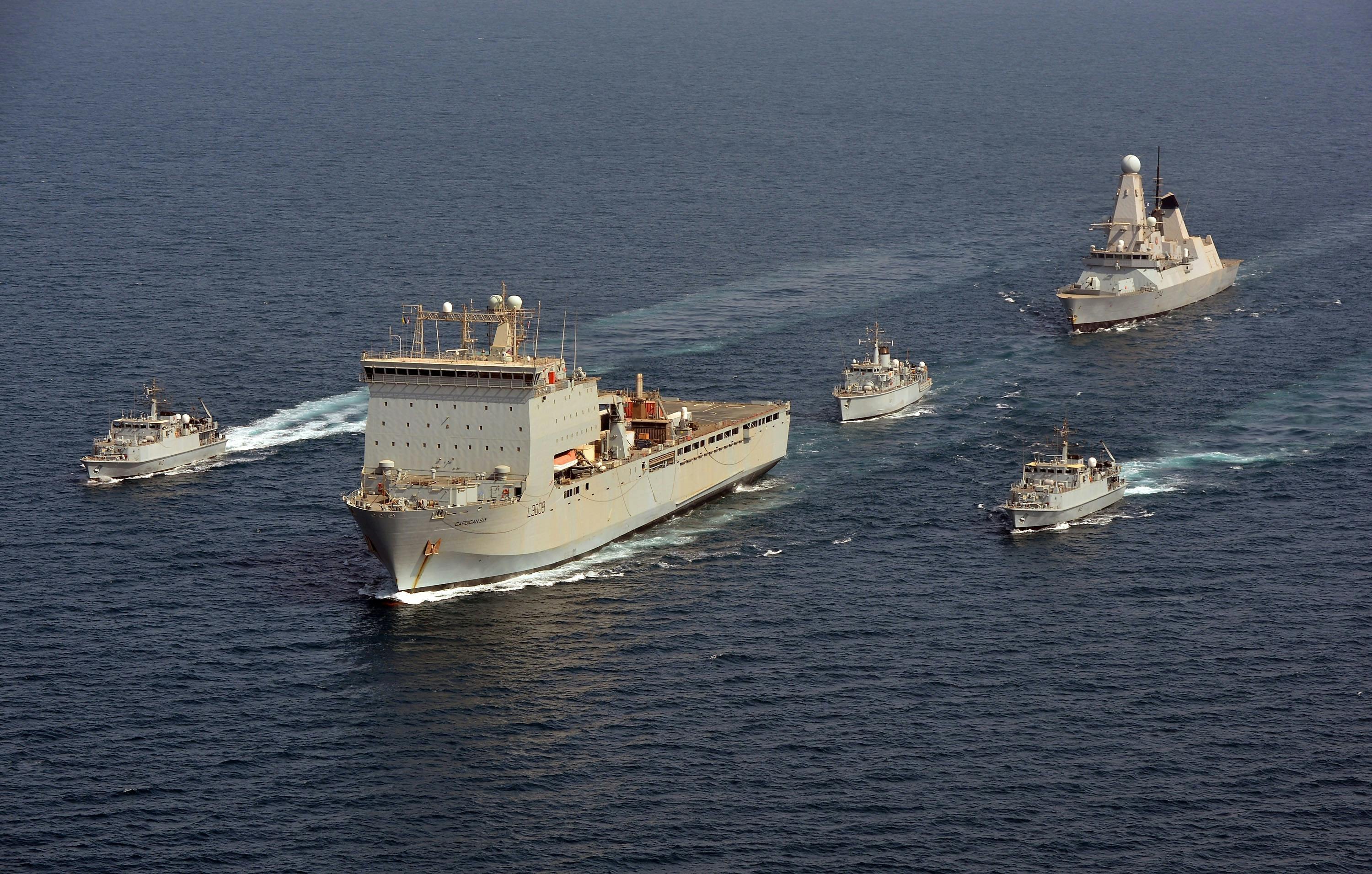
Speaking to these different nations, it’s clear that they all have very different plans for the future of mine warfare. Some are leaning towards a more autonomous and unmanned system, whereas some insist that this simply isn’t the way forward for mine warfare.
The one thing they all agree on, however, is that the threat from mine warfare isn’t going away.
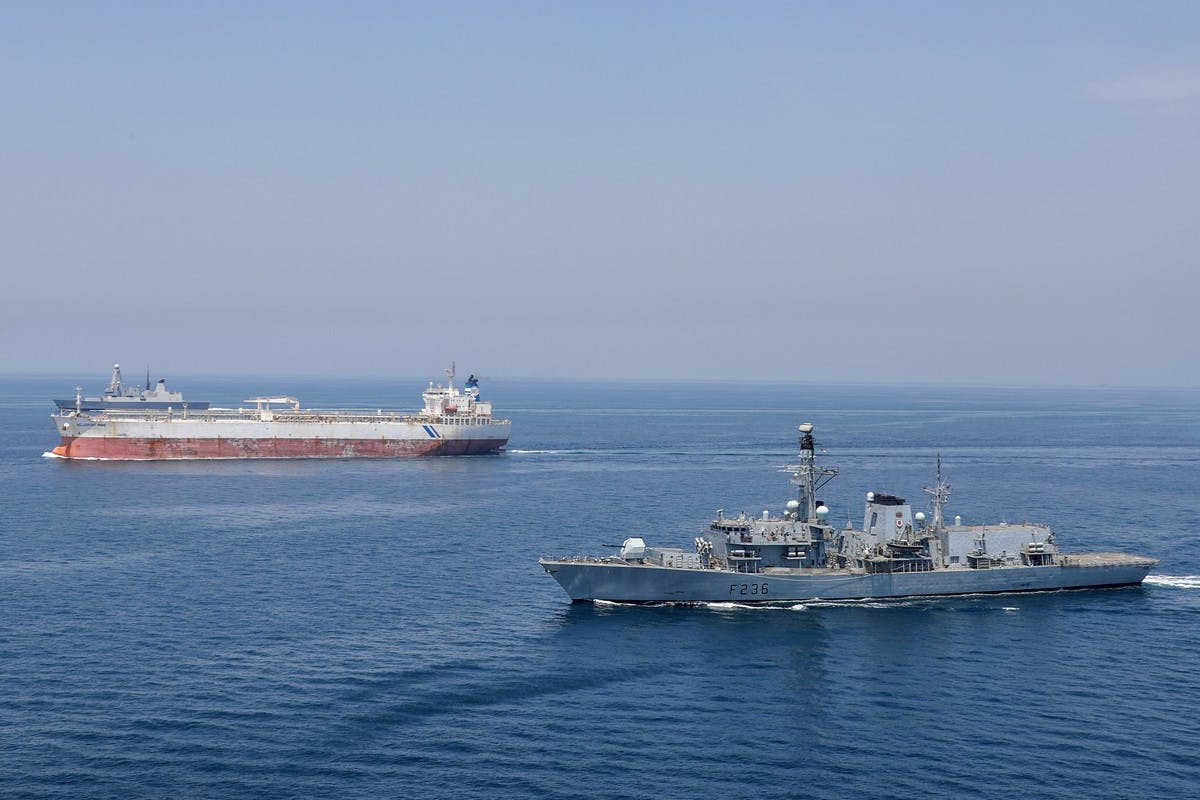
The US Navy’s Mine Hunting Unmanned Surface Vehicle (MHU) was identified as an “urgent operational need” by the Pentagon, although personnel were not keen to elaborate on why.
It’s well known that the United Kingdom has a unique presence in the Gulf. There are four Mine Countermeasure Vessels (MCMVs) in the region, ready to go, today. With the exception of the Americans, no other nation is as well placed to counter the mine threat.
One area that sets the UK apart is the dive teams. The equipment a diver will use has the magnetic signature of a paper clip and is designed to be non-acoustic. It releases no bubbles and makes no sound. This is hugely important given mines today aren’t just detonated by physical contact, but also by magnetic, pressure, and acoustic disturbance.
Even so, divers will approach a mine alone so as to minimise risk to others.
The primary way mines will be identified and located in the Gulf will be using the Remus 100. Originally intended for civilian use for hydrographic surveying, it’s now used by navies around the world to search any area less than 100 metres deep. The Royal Navy has a fleet of eight – personnel told me they’re easy to maintain and simple to use. Whilst they’re primarily used for identifying mines, manufacturer Kongsberg says they can also be used for search and rescue.

The UK also has a unique wealth of mine warfare experience in the region. There are some on board HMS Shoreham for example for whom it’s their tenth tour of the region.
https://twitter.com/HmsShoreham/status/1188713032815448066
There are a variety of scenarios in which such experience would prove invaluable. The two most likely of them could play out as follows:
1. Tehran informs the international community that mines have been laid in the Gulf. It could do this by making a public statement, or leaking information to national media. This is a key point; if shipping companies believe that the area is no longer mine-free then they’ll panic and cease transits. There does not actually have to be a single mine in the water for there to be disruption – those using the water simply have to believe that there may be.
In such an event, nations with the capability to do so would have to confirm that there were indeed no mines laid, and they’d need to do this as fast as possible. Somewhat worryingly, there seems to be concern as to how quickly this could happen. One allied sailor told me a single report of a mine in the Strait of Hormuz could take days to confirm as false. He also added that there would be lasting damage even once the report had been dismissed: insurance premiums for tankers operating in the region would skyrocket.
2. Iran genuinely lays mines in a shipping lane. If this happened and was spotted, US forces would act to deny Iran the capability to lay any further mines. As Stratfor recently wrote, “Iran has a very finite window to lay as many mines as possible and inflict as much damage as possible in the Strait of Hormuz before the United States and its allies greatly reduce its ability to do so.” Concurrently, the locations of these mines would need to be identified, and they’d need to be cleared swiftly.
These possibilities might seem far-fetched, but they’re being constantly discussed. Multiple people on board Cardigan Bay mentioned them, adding that a clock would start ticking the moment merchant shipping no longer felt safe to transit the Strait.
Oil prices would start to creep up, and the effects would begin to be felt back home. The responsibility that the mine clearance teams have is not lost on them. Through the camaraderie, smiles, and laughter, each nation knows that they could be called upon at any moment to reopen the world’s most important chokepoint.



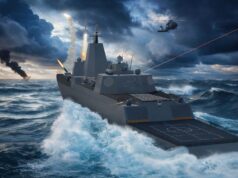
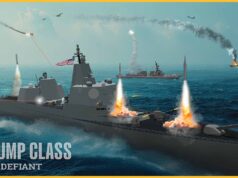
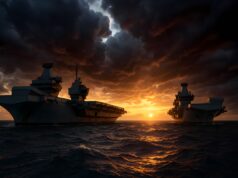
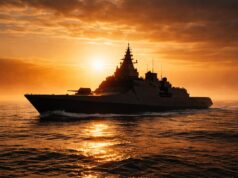



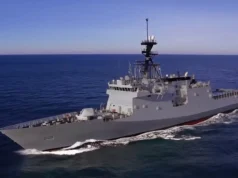
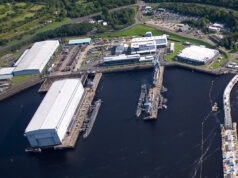
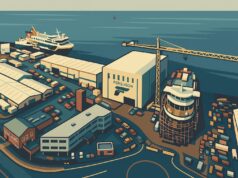

They need a bigger table so everyone can sit and be comfortable,makes for a better meeting I think.
The planning room does not normally have every man and his dog in attendance.
If you need a big meeting room there are huge dinning areas, one of which can seat 400 people.
The RN is busy out here.
In the space of a few months I have worked on all of the vessels mentioned and am currently looking after one of them for a well needed maintenance period.
its not just the equipment but the crew also. They have worked bloody hard closed up in defence watches almost constantly with little in the way of a break and are now taking a well deserved stand down.
The RIB boat in front of the Ch53 is a remote operating system. She does carry them from time to time especially those owned by other nations who need CBs big deck and cranes to deploy them.
Gunbuster, where the hell are you, if you are where I think you are then good luck and keep your bloody head down.
Where i am is perfectly safe.
No problems with anything or anyone at all here.
The biggest issue this week is that it has rained a couple of times and the temp is down to a chilly 22 degs! The rain messes up the upper deck husbandry and painting schedule!
I am not sure how accurate this is, but isn’t Saudi Arabia building another pipeline to the Red Sea because of this very issue?
That would be wise.
Why would there be “panic and hysteria “ it’s not Ww2!
Photo of an intel briefing posted on here was a bit of a surprise. I’m sure you got the nod to do so but still, are you sure that’s wise?
All part of the exercise – it’s a fictional scenario so the ‘intel’ is all made up, hence why PJHQ were happy for me to share it.
It will be interesting to see how the RN develops mine countermeasure capabilities in future, especially as the current MCMV reach end of life in the next decade. The NSS suggested a decision point for replacement vessels by 2022 with IOC circa 2030.
One path might be 85-90m class vessels such as the BMT Venari concept or what the Dutch and Belgians seem to be procuring, but such a solution might be a missed opportunity for the RN. The flexibility of MCM mission module solutions, both from an equipment deployment and manning perspective, might provide a practical and affordable opportunity to increase the frigate fleet with T31 largely replacing the Hunt/Sandown classes without compromising overall fleet MCM capability. It might actually expand MCM capability as outlined below. A one-for-one ship replacement with T31 isn’t likely for all 13 remaining vessels due to capital cost, but T31 was designed for very low manning levels, maintenance and fuel costs, so operating expenditure might not be that dissimilar on a purely MCMV role in an apples-to-apples comparison. For example the Danes engineered the IH to only require 20 personnel to sail the ship when non-operational.
In this scenario, MCM modules are not dedicated to specific ships over the long term, but are instead independently manned and deployed. They might operate from River-class, T31, T26, RFA vessels, any commercial vessel with appropriate deck and crane, or from static location on shore when relevant. Thus MCM may be deployed from many more than the current 13 platforms, if sufficient mission modules and teams are created.
Manning is a particularly important factor. No longer is an entire RN crew dedicated to the MCM role, helping overall RN challenges with manpower. It opens up the opportunity to use RN reserve for some of the MCM mission module capability, augmenting the full time RN capability for enhanced overall capability, where UK based training of RNR can be done economically from low end commercial ship platforms.
Perhaps most importantly is that a T31 provides a much more defensible platform for MCMV deployment in hostile regions, particularly off a hostile shore where in future ASM attack is a very credible threat.
There is also a similar argument for a littoral/home waters T31 based ASW, similarly using mission modules and leveraging additional RNR manning, but I’ve wittered on long enough already. In summary, perhaps the watchword for the RN and perhaps across all UK forces is flexibility and adaptability of the kit you have, when perhaps you can’t get all the kit you need/want. Just some food for thought.
Plans are in the pipeline to pay off the Sandowns and Hunts and to move to a fully autonomous MCM system. It even has a project code name so you know its serious.
The systems will be containerised and portable, so they can be deployed on any platform that has the capacity to take a mission module containerised system ( T26, T31, LPD, RFA Bay , Tide etc) so that gives an idea of what the timeline will be for its in service dates.
The Bay class regularly deploys other nation autonomous MCM systems during exercises so its not an unknown area for the RFA and RN.
When I was working in defence I undertook a small project looking at commercial of the shelf autonomous systems for a number of roles including MCM. It included the Remus 100 which was clearly a front runner.
Not saying I had any direct influence but it is nice to think at least something I did actual supported a procurment decision!
Thanks for confirming the trend. I had seen reports of such exercises with the US in the Caribbean using a Bay and it seemed likely the RN would go in this direction but I hadn’t seen any confirmation. Containerised solutions are also of course also deployable by air which provides a greatly enhanced ability to respond rapidly anywhere in the world there’s a host vessel. I’m really hopeful that this is how the RN gets its frigate numbers back up without fantasy fleet expenditures.